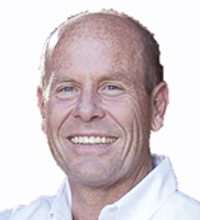Ground-water sourced geothermal systems
About this time two years ago, Theron (my youngest of six children) and I got out of the car at the Disney Wilderness Preserve in Kissimmee, Florida. Theron had pitched the idea of a new commercial flagpole to the Preserve, and on this particular day, he was meeting facilities manager, Daniel Cole to show Danielhow he intended to carry out the Eagle Project.
As we walked up to the buildings, the heat was stifling in the tropical Florida climate, yet I noted there was no equipment noise. I told Theron that the building must have geothermal heat pumps (GHPs). He asked how I knew that, and I told him that GHPs didn’t need the outside condensor fans, so they were quiet and normally all-inside.
In the early 1990’s, the Nature Conservancy, the State of Florida, and a number of other groups got behind efforts of the Walt Disney Company which purchased the property to mitigate its expansion and transferred it to the Conservancy to create a nature preserve dedicated to wetlands restoration on an unprecedented scale. The transfer also helped mitigate future impacts associated with the development of Walt Disney World. The Walt Disney Company provided funds for restoration and wildlife monitoring on the property and continues to partner on a number of on-site projects.
Today, The Nature Conservancy’s 11,500-acre Disney Wilderness Preserve near Kissimmee stands as a testament not only to Disney’s conservation efforts, but to the power of cooperation, perseverance and innovative thinking. Perhaps most significantly, the preserve has become a national model for sustainable development and state-of-the-art conservation management, making GHPs a natural choice from the beginning.
As Theron was presenting his Eagle project plan to Daniel, he asked Daniel if they used geothermal cooling. Daniel said they did, and asked Theron how he knew that. Theron told Daniel about our conversation coming in earlier, and Daniel asked me if I was a geothermal contractor.
I told him that I had retired, but that I was now doing some consulting and writing. Daniel said they were slated for an equipment upgrade and asked if he could hire me. I told him that I’d be pleased to do it, but at no charge.
While Theron worked over the next several months to organize his Eagle flagpole project, I performed my efforts in helping the preserve with their geothermal needs. Some of the system considerations for this upgrade were:
- Current well condition and integrity
- Condensor (well-water) piping condition
- Geothermal heat pump upgrades
- Valves and hoses
The wells (one supply and one return, called a “class-V thermal exchange” system) and pump were identified as “in great condition.” One issue was that the pipe was schedule 40 PVC, which should not be used on geo-exchange systems (outside or inside), so it was recommended for an upgrade to high density polyethylene (HDPE). One of the heat pumps had a bad compressor, and the preserve elected to just upgrade all five heat pumps totaling 20 tons. Of course, with the new heat pumps, we specified new valves and hose kits.
Sometimes water quality is an issue, but with proper design, water quality rarely poses any concerns in ground water systems, as was the case with the preserve.* Much of the time, problems commonly attributed to water quality are actually related to improper equipment grounding, or temperatures and water volumes (flow-rates) that are out of specification for the application.
A request for proposal (RFP) was sent out and the proposals were evaluated. The winning proposal was not the least expensive, but it did include all the parts and pieces to ensure a long life for the new geothermal system.
There are 4 main types of geo-exchange:
- Surface water exchanger
- Standing column well (SCW)
- Vertical closed loop (most common type)
- Class V thermal exchange (pump and re-injection)
Much of the world has abundant aquifers, often a good application for class-V geo-exchange systems (regardless of potability). With proper engineering, these systems will last indefinitely with little more than planned maintenance. Class-V works exceptionally well in large scale district projects into the thousands of tons and more when properly engineered.
Unlike 20 years ago, geothermal heating and cooling systems are specified quite often in new constructions and for retrofits and upgrades. Building codes are constantly changing, and you can be certain that geothermal will become the minimum standard for new construction in coming years. Laws are already on the books in New York City and Toronto that require GHPs be installed in retrofits and new construction projects. Now is a perfect time to contact the International Ground Source Heat Pump Association (IGSHPA) and get your company trained and certified on geothermal. Support the efforts of the Geothermal Exchange Organization (GEO) as they help legislators understand geothermal technology.
Disney’s Wilderness Preserve got a nice “two-for-one” with a new geothermal system, and a new flagpole. If you’re visiting Orlando’s themes parks, be sure to stop by and enjoy the quiet comfort!
Disney’s Wilderness Preserve
The Nature Conservancy
2700 Scrub Jay Trail
Kissimmee, FL 34759
Phone: (407) 935-0002
Email: visitdwp@tnc.org
*When water quality is at its worst, a plate and frame exchanger and/or treatment protocols may be used to make geothermal systems perfect for even the toughest of situations.
Jay Egg is a geothermal consultant, writer and the owner of EggGeothermal. He has co-authored two textbooks on geothermal HVAC systems published by McGraw-Hill Professional. He can be reached at jayegg.geo@gmail.com





